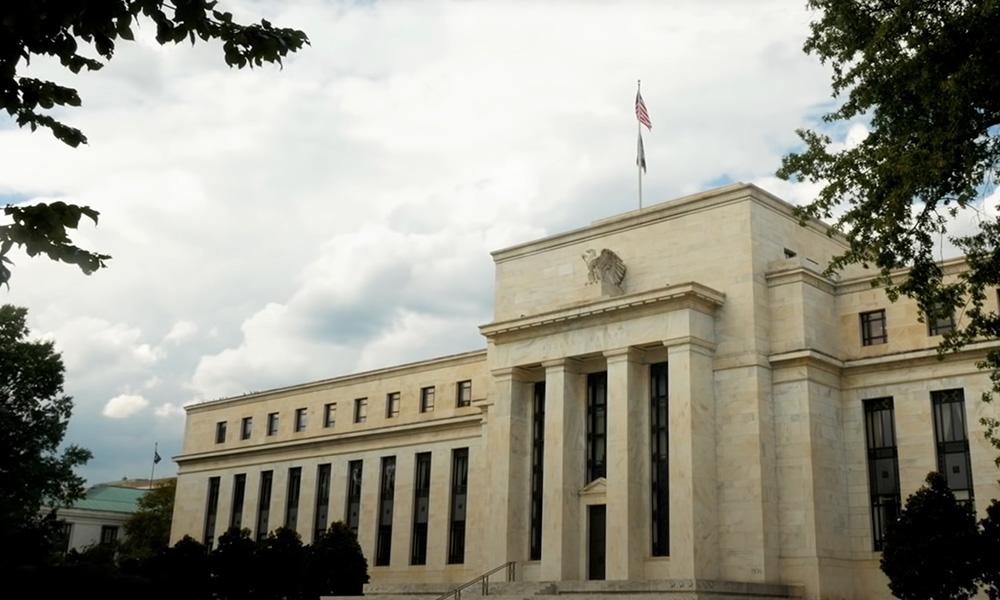The Federal Reserve is sounding the alarm: the economy is cooling and the interest rate cut signal has sparked heated discussion!
2025-08-07 09:02:18

Economic Slowdown Alert: Kashkari's Call for Rate Cuts
Neel Kashkari, President of the Federal Reserve Bank of Minneapolis, has undoubtedly become one of the most prominent voices within the Federal Reserve in recent times. In an interview with CNBC's "Squawk Box," Kashkari bluntly stated that the US economy is gradually slowing, a trend that strongly justifies interest rate cuts in the coming months. He noted that recent economic data demonstrates an undeniable slowdown in underlying economic conditions, which has caused him to waver in his current monetary policy stance. Kashkari explicitly stated that the possibility of two 25 basis point rate cuts by the Fed by the end of 2025 is "reasonable." He further emphasized that signs of an economic slowdown have led him to ponder a key question: How long can the Fed wait to see the impact of external factors, such as tariffs, on the economy? This cautious yet clear statement underscores Kashkari's concerns about the economic outlook and fuels market expectations of a rate cut.
Hidden concerns about the job market: Daley's call for policy adjustments
Echoing Kashkari's comments, Mary Daly, President of the Federal Reserve Bank of San Francisco, also expressed deep concern about the weakening U.S. labor market. Daly noted that once a labor market begins to slow, the decline can often be unexpectedly rapid and the consequences can be severe. Based on recent labor market data, she considered a further slowdown "unwelcome" and called on the Federal Reserve to adjust monetary policy in the coming months to address potential economic risks. Like Kashkari, Daly believed two interest rate cuts this year were reasonable, but added that if economic conditions continued to deteriorate, the likelihood of more than two cuts was even higher than fewer. This more aggressive stance reflected her heightened awareness of downside risks to the economy.
Daly also noted that the impact of tariffs on inflation is likely to be short-term, rather than a long-term structural problem. This view leads her to favor lowering interest rates to stabilize the economy rather than overly worrying about short-term inflation fluctuations. Her statement not only provides a theoretical basis for rate cuts but also adds a new dimension to the Fed's internal policy discussions.
"Worrying" signals from employment data: Cook's cautious observation
Federal Reserve Board Governor Lisa Cook detected even more troubling signals in the latest employment data. The U.S. Department of Labor's recently released July employment report showed job growth far below market expectations, while non-farm payroll figures for May and June were also significantly revised downward. Cook admitted, commenting on the report, "This is concerning." She noted that data revisions typically occur when the economy is turning, suggesting that the current job market may be at a critical turning point. Although Cook did not explicitly state how this data will affect her monetary policy stance, her focus on the nature of price increases—whether they are one-time fluctuations or persistent pressures—suggests her cautious approach to policymaking. Cook emphasized that the Fed's current understanding of the inflation transmission mechanism remains limited, complicating policy adjustments.
Internal Dissent and External Pressure: Fed Divide and Trump's Impact
Notably, neither Kashkari nor Daly votes on interest rate policy this year, but their views resonate with those of two Fed governors. Just last week, at the Fed's rate-setting meeting, the two governors dissented from the decision to keep the policy rate unchanged, arguing that the Fed should more clearly assess the pass-through effects of rising tariffs on consumer prices. This internal disagreement reflects the differing considerations among Fed policymakers as they grapple with the dual challenges of a slowing economy and inflationary pressures.
At the same time, external political factors are also adding uncertainty to the Fed's policy discussions. US President Trump recently stated that he will shortly nominate a new Federal Reserve Board member to fill the vacancy left by the unexpected resignation of Fed Governor Adriana Kugler. Trump's move has sparked widespread speculation: Will the new board member be nominated as Chair-designate before the end of Chair Powell's term, or will he or she simply serve out the remainder of Kugler's term, which runs until the end of January 2026? Regardless of the outcome, Trump's intervention in the Fed's personnel decisions has undoubtedly added further uncertainty to the future direction of monetary policy.
Summary: The Fed at a Crossroads
In summary, the Federal Reserve stands at a critical crossroads. Statements from policymakers like Kashkari, Daly, and Cook clearly convey deep concern about a cooling economy and a weak job market. While inflation remains above the 2% target, signs of an economic slowdown are prompting some officials to reassess the urgency of monetary policy. Expectations of two rate cuts are increasingly becoming a focal point, but the magnitude and timing of these cuts remain contentious. Meanwhile, external political factors and uncertainties such as tariffs further cloud the Fed's policymaking. How the Fed strikes a balance between combating inflation and stabilizing growth will be a key focus in global markets in the coming months. Will this wave of rate cuts signal a crucial step in achieving a soft landing for the US economy?
Overall, the Fed's interest rate cut signals and concerns about an economic slowdown are likely to put downward pressure on the US dollar in the short term, especially as the market digests the expected rate cut. However, inflationary pressures, the impact of tariffs, and political uncertainty are likely to limit the dollar's decline. The dollar's actual trajectory will depend on the combined influence of future economic data, policy developments, and the global market environment.
- Risk Warning and Disclaimer
- The market involves risk, and trading may not be suitable for all investors. This article is for reference only and does not constitute personal investment advice, nor does it take into account certain users’ specific investment objectives, financial situation, or other needs. Any investment decisions made based on this information are at your own risk.





















